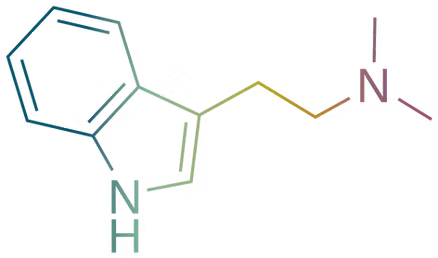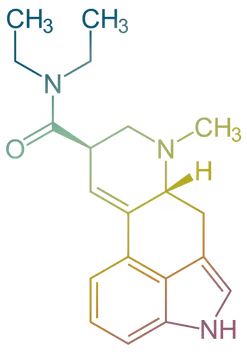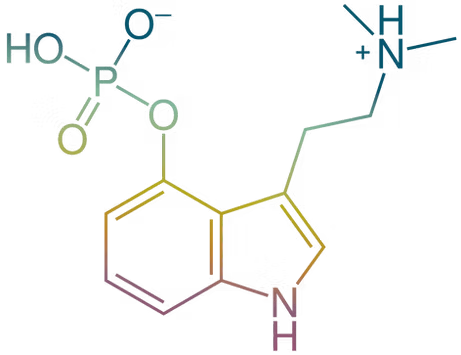PSYCHEDELIC studies

Psilocybin and other Psychedelic substances like LSD have actually the subject of academic research and study for almost 70 years, albeit with a 30 hiatus during the ill-fated “war on drugs”. Doctors and Therapists have long been interested in the ability of these substances to elicit meaningful and transformative experiences with long lasting positive effects, and there were several studies which went on during the 1950s and 60s. While this early research showed immense promise for the use of psychedelics as a treatment, unfortunately the study of these substances was abruptly (and unjustifiably) halted in the early 1970’s. It took until 1997 for the first post-drug-war Psilocybin study to be conducted by a team of researchers at the University of Zurich.
This study was conducted by a team of researchers led by Dr. Franz Vollenweider, and explored whether brain function under the influence of psilocybin was consistent with the brain function of chronic schizophrenia patients, finding that these brain states were significantly contrasted. They also found that psilocybin increased cerebral glucose metabolism (in layman’s terms brain activity) in many areas, and had dampening effects on the ego-influenced Default Mode Network. This study catalyzed several others, at institutions in several nations such as John Hopkins University, The Multidisciplinary Association for Psychedelic Studies (MAPS), The Beckley Foundation, Yale, Stanford, Berkeley, New York University. This growing body of data has shown Psychedelics to be both safe & effective in treating a host of conditions. Some of these conditions include depression, addiction, anxiety, OCD, PTSD, and eating disorders.
In the decades since the turn of the century public attitude has also positively shifted towards the unfettered and open-minded research of psilocybin. Now, in 2020, governing bodies are beginning to follow suit. The FDA (Federal Drug Administration) has designated psilocybin a breakthrough therapy for Major Depressive Disorder (MDD), and Health Canada has granted several licenses to private and public companies in order to study psychedelics. Over a dozen accredited institutions, a few of which include Harvard, Stanford, Yale, The Usona Institute, The Heffter Institute, Johns Hopkins University, and the University of Toronto are in the process of clinical trials/studies to determine the potential of psilocybin as a therapeutic aid, and there is a mountain of anecdotal evidence that cannot be discounted.

DMT
The Spirit Molecule
C12H16N2

Survey of subjective “God encounter experiences”: Comparisons among naturally occurring experiences and those occasioned by the classic psychedelics psilocybin, LSD, ayahuasca, or DMT.
Published April 23rd, 2019 by Roland R. Griffiths et. al.
About: This had been the first study providing a detailed comparison of naturally occurring (non-psychedelic) and psychedelic-occasioned experiences that participants interpreted as an encounter with, what the researches refer to as, a ‘God’ or an ‘Ultimate Reality’. The authors note that the similarities amongst those who experienced such an encounter are striking, whether through using psilocybin, LSD, or DMT.
Excerpt: “Participants reported vivid memories of these encounter experiences which frequently involved communication with something most often described as God or Ultimate Reality and having the attributes of being conscious, benevolent, intelligent, sacred, eternal, and all-knowing. The encounter experience fulfilled a priori criteria for being a complete mystical experience in about half of the participants.”
Link: https://journals.plos.org/plosone/article?id=10.1371/journal.pone.0214377
Chronic, Intermittent Microdoses of the Psychedelic N,N-Dimethyltryptamine (DMT) Produce Positive Effects on Mood and Anxiety in Rodents
Published March 4th, 2019 by Lindsay P. Cameron et. al.
About: This study had sought to determine whether acute, hallucinogenic doses of psychedelic compounds can produce long-lasting changes in mood and behaviour in humans. The study builds off recent data that suggests that a single hallucinogenic dose of DMT can change rodent brain structure and behaviour even long after the drug has been cleared from the body. The authors hypothesize that administering DMT on a chronic, intermittent, low-dose regiment (microdosing) might alter behaviour.
Excerpt: “A single hallucinogenic dose of several psychedelic compounds has been shown to increase gene expression of several genes related to neural plasticity… Chronic, intermittent low doses of DMT appear to accomplish this [repairing of damaged circuits relevant to mood and anxiety] without any obvious changes in the expression of BDNF [brain-derived neurotrophic factor] or other genes known to be differentially regulated following administration of a single high dose of a psychedelic.”
Link: https://pubs.acs.org/doi/10.1021/acschemneuro.8b00692
Ayahuasca Benefits: Healing for Cancer, Depression & More
Published by https://soul-herbs.com
About: Although some want to try Ayahuasca for a different experience, say, transformation, others simply want healing. Yes, some patients who are not satisfied with their PTSD or depression medications turn to Ayahuasca. Others with terminal diseases like cancer also try it in hopes of improving their condition. If you want to learn more about the Ayahuasca benefits in the medicine field, read more on how efficient it is in treating depression, PTSD and cancer.
Excerpt: “Ayahuasca is a versatile medicinal plant. It has the potential to treat PTSD, depression, anxiety, addiction and cancer. Here are the different benefits of Ayahuasca. Read it and it will surely interest you”
Link: https://www.soul-herbs.com/ayahuasca-benefits/
LSD
C20H25N30
Lysergic acid diethylamide

Lysergic acid diethylamide (LSD) promotes social behavior through mTORC1 in the excitatory neurotransmission
Published February 2nd, 2021 by Roland Danila De Gregoria et. al.
About: This study sought to examine whether microdoses of LSD could offer the potential to promote various levels of social behaviour. Administering low doses of LSD to mice, the authors detailed the prosocial effects of LSD as it influences various receptors relating to social behaviour. Specifically, repeated doses of LSD served to excite AMPA and 5-HT2A receptors by increasing the phosphorylation of a protein (mTORC1) that modulates social behaviour.
Excerpt: “It is noteworthy that the behavioral outcomes documented in our study were obtained with a relatively low dose of LSD, compared to previous studies in animals (100 to 200 µg/kg) and humans… our study unveils a mechanism contributing to the prosocial effects of LSD, through the stimulation of 5-HT2A and AMPA receptors and the activation of the mTORC1 pathway in excitatory neurons.”
Link: https://www.pnas.org/content/118/5/e2020705118
Twenty percent better with 20 micrograms? A qualitative study of psychedelic microdosing self-rapports and discussions on YouTube
Published November 28th, 2019 by Martin Andersson and Anette Kjellgren
About: Building atop the trending practice of microdosing LSD, the authors of this study sought to qualitatively analyze social media accounts, cultivating data and assessing it through a method that the authors refer to as ‘inductive thematic analysis’. They conclude that microdosing can provide similar benefits to full-dose therapeutic interventions with less risk of adverse reactions that are related to experiences with higher doses.
Excerpt: “Social media and internet discussion forums have played a substantial role in the growing visibility of the microdosing phenomenon… In recent years, the microdosing forum of Reddit.com has annually doubled the number of subscribers… Self-reporting and sharing of drug experiences in online text-based drug forums have proved to be an expedient source of qualitative data for research… A process of augmented self-reflection was often seen as central to the microdosing practice. The microdosers gave extensive descriptions of thoughtful insights and psycho-spiritual changes, reportedly enabling improvements in personal orientation, priorities, and habits.”
Link: https://harmreductionjournal.biomedcentral.com/articles/10.1186/s12954-019-0333-3
PSYLOCYBIN
3-(2-Dimethylaminoethyl)-1H-indol-4-yl/ dihydrogen phosphate
C12H17N2O4P

Effects of Psilocybin-Assisted Therapy on Major Depressive Disorder
Published November 4th, 2020 by Alan K. Davis et. al.
About: This study sought to determine whether psilocybin-assisted therapy is effective among patients dealing with major depressive disorder. In a randomized clinical trial of 24 participants who experienced major depressive disorder, psilocybin had been administered in two sessions (session 1: 20mg/70kg & session 2: 30mg/70kg) via gelatin capsules with 100ml of water in the context of a supportive psychotherapy. Subsequently, the authors had concluded that psilocybin with therapy is efficacious in treating major depressive disorder – extending the results of previous studies of this intervention style.
Excerpt: “Of the randomized participants, 24 of 27 (89%) completed the intervention and the week 1 and week 4 postsession assessments… participants who received immediate psilocybin-assisted therapy compared with delayed treatment showed improvement in blinded clinician rater–assessed depression severity and in self-reported secondary outcomes through the 1-month follow-up”
Link: https://jamanetwork.com/journals/jamapsychiatry/fullarticle/2772630
Emotions and brain function are altered up to one month after a single high dose of psilocybin
Published February 10th 2020 by Frederick S. Barrtt et. al.
About: 12 healthy volunteers completed an pilot study which had included assessments 1 day before, 1 week after, and 1 month after receiving a 25mg/70kg dose of psilocybin to test the hypothesis that psilocybin can effectuate enduring changes in neural correlates relating to mood. Preliminary findings suggest that psilocybin may be able to increase neuroplasticity, offering an effective therapeutic target for psilocybin.
Excerpt: “A notable feature of the current report is that the reported effects of psilocybin were observed well after psilocybin would have been eliminated from the body and beyond expected transient effects of receptor trafficking that may be occurring after psilocybin administration… psilocybin may have initiated a dynamic and neuroplastic process that was sustained for at least a number of weeks. It is possible that such a neuroplastic period may allow for a more enduring shift towards positive affective.”
